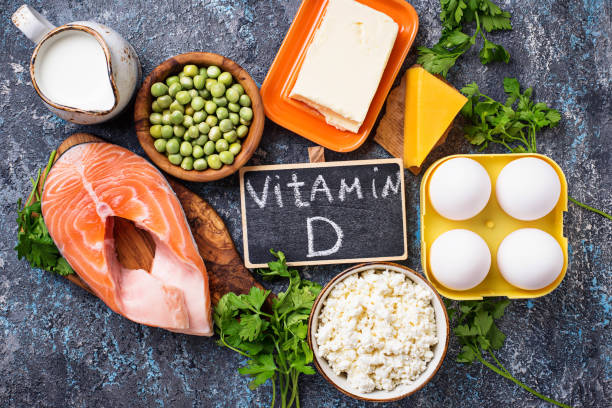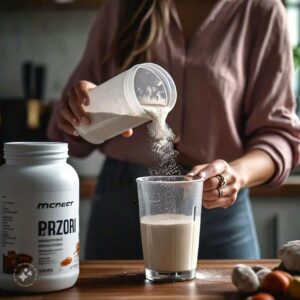Vitamin D, also known as the “sunshine vitamin,”. It is play an important role in maintaining overall health and comfort. While sunlight is a natural source, it’s equally important to include vitamin D-rich foods in our diet. In this article, we will explore the symptoms of vitamin D deficiency, the importance of vitamin D foods, supplements, benefits, and potential risks related to its intake.
II. Deficiency Symptoms
Vitamin D is an vital nutrient for human body to make sure your body gets the proper quantity of it, the first step is to identify the symptoms of vitamin D deficiency. This vitamin supplements deficiency show the following symptoms like:
Fatigue
Muscle weakness
Bone discomfort
Raised risk of infection
are typical symptoms. Osteoporosis and rickets are among the disorders that can result from severe shortage, which highlights the significance of keeping proper vitamin levels.
III. Vitamin D Foods
A. Fatty Fish
- Salmon
- Trout
- Mackerel
- Sardines
B. Fortified Foods
- Fortified milk
- Fortified orange juice
- Fortified cereals
- Fortified tofu
C. Egg Yolks
While egg whites are a popular choice for many, don’t reject the yolk. It is a great source as vitamin D foods.
D. Beef Liver
For those who consume meat, beef liver is an excellent source of vitamin D , along with other vital nutrients.
Remember, incorporating a variety of these foods into your diet can help ensure a well-rounded intake of vitamin D.
IV. Vitamin D Supplement
In some cases, dietary sources may not be sufficient to meet your vitamin D needs. Supplements can bridge this gap, providing a convenient and reliable way to maintain the best levels. Before including supplements, consult with a healthcare professional to determine the proper dosage for your specific needs.
V. Vitamin D Benefits
Beyond its well-known role in bone health, vitamin D offers a multitude of benefits for the body. These include:
- Bone Health: Helps in calcium absorption, promoting strong and healthy bones.
- Immune System Support: A sufficient level of vitamin is linked to a robust immune system, reducing the risk of infections.
- Mood Regulation: There’s evidence to suggest that vitamin may play a role in regulating mood and warding off conditions like depression.
- Heart Health: Some studies indicate that vitamin may contribute to cardiovascular health by supporting blood vessel function.
- Muscle Function: Adequate vitamin D foods levels are essential for maintaining optimal muscle function and reducing the risk of falls, especially in older adults.
VI. Vitamin D and D3
Vitamin D exists in two main forms: D2 (ergocalciferol) and D3 (cholecalciferol). While both are effective, D3 is generally more potent and is the form produced by the skin in response to sunlight. When choosing supplements, opt for D3 for maximum efficacy.
VII. Vitamin D Foods
In addition to our bodies require a spectrum of nutrients for overall health. Including these nutrient-rich foods into your diet for a well-balanced nutritional profile:
- Leafy Greens: Spinach, kale, and Swiss chard are rich in vitamins, minerals, and antioxidants.
- Colorful Vegetables: Carrots, bell peppers, and sweet potatoes provide a variety of vitamins and antioxidants.
- Nuts and Seeds: Almonds, chia seeds, and flaxseeds offer essential nutrients, including healthy fats and protein.
- Fruits: Berries, citrus fruits, and apples are excellent sources of vitamins and fiber.

VIII. Vitamin D Sources
Understanding the sources of vitamin D foods helps in planning a diet that meets your nutritional requirements. Apart from foods, consider the following sources:
- Sunlight: Exposure to sunlight triggers the production of D vitamin in the skin. Aim for 10-30 minutes of sun exposure, several times a week, depending on factors like skin tone and geographical location.
- Supplements: That Vitamin supplements are available in various forms, including capsules, tablets, and drops. Ensure you follow the recommended dosage.
IX. Vitamin D Overdose
Although vitamin D is impotent for good health, it is important to stay below advised limits. Over intake of that vitamin can cause toxicity, which shows as weakness, nausea, vomiting, and potentially renal damage. Never diverge from the suggested daily allowances, and before making any major supplement adjustments, get medical advice.
X. Vitamin D Side Effects
While side effects from normal dietary intake are rare, excessive supplementation can lead to adverse effects. These may include:
- Hypercalcemia: Elevated levels of calcium in the blood can lead to kidney stones and other health issues.
- Digestive Issues: High doses of vitamin D foods supplements may cause digestive discomfort, including nausea and diarrhea.
- Dehydration: Some individuals may experience increased thirst and dehydration as a result of that vitamin toxicity.
XI. Vitamin D 25 Hydroxy
Vitamin D levels are usually measured through a blood test that surveys the concentration of 25-hydroxyvitamin. This marker gives a complete image of your vitamin D status, assisting medical care experts with deciding if dietary changes or supplementation are vital.
XII. Vitamin D Levels
Maintaining optimal levels is essential for overall health. Factors such as age, skin color, geographical location, and lifestyle can influence your D vitamin needs. Regular blood tests can help monitor your levels and guide adjustments to your diet or supplementation.
XIII. Vitamin D Gummies
Vitamin D gummies are a delicious alternative for people who have trouble taking traditional supplement forms. But watch out for added sugars and make sure the product has a sufficient amount of medicine per serving.
XIV. Helps with Skin and Hair Health
Beyond its internal benefits, that vitamin D foods also plays a role in maintaining healthy skin and hair. It supports skin cell growth, repair, and metabolism, contributing to a radiant complexion. Additionally, suitable vitamin D levels are associated with healthier hair follicles and may help prevent hair loss.
XV. Vitamin D Deficiency
Although the wealth of information available, deficiency remains a dominant health concern. Factors, for example, indoor ways of life, sunscreen use, and limited sun openness add to this issue. Routinely survey your vitamin D foods levels and go to proactive lengths to address any deficiencies through diet, daylight openness, or supplements.
Summary
In summary, it is key to comprehend the role that vitamin D plays in preserving general health. This thorough guide intends to provide you with the knowledge necessary to make educated dietary decisions, from identifying deficient signs to adopting foods and supplements high in that vitamin . Aim for a balanced strategy to maximize the benefits of vitamin D and live a healthier, more energetic life by mixing dietary sources, exposure to sunlight, and supplementation when needed.
Daily intake
| Infants (0-12 months) | 400 IU (10 mcg) |
| Children (1-18 years) | 600 IU (15 mcg) |
| Adults (19-70 years) | 600 IU (15 mcg) |
| Adults (71 years and older) | 800 IU (20 mcg) |
| Pregnant & Breastfeeding Women | 600 IU (15 mcg) |
FAQS
What are the best dietary sources of vitamin D?
Fatty fish, cod liver oil, and fortified foods are some of the best sources. While fruits like oranges and strawberries can be fortified with vitamin D, they are not primary sources
What are common symptoms of vitamin D deficiency?
Bone pain, fatigue, depression, impaired wound healing, and frequent infections are common signs.
Is it possible to get too much vitamin D?
Yes, excessive vitamin D intake can lead to toxicity. It’s essential to stay within recommended guidelines.



